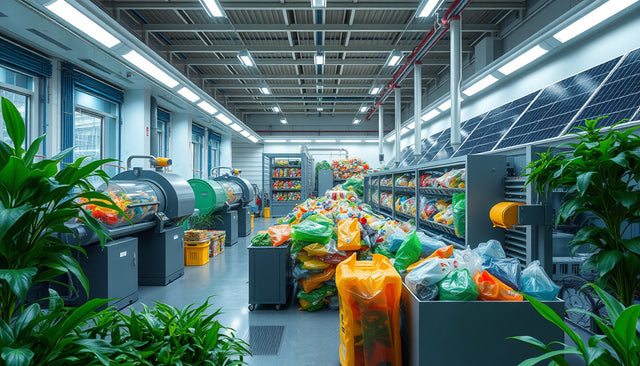Six Experts Discuss Advances in Sustainable Products from Plastic Waste
In a Thermo Fisher Scientific webinar series called “Sustainable Products from Plastic Waste”, six experts came together. They shared ideas and recent progress. Each expert linked concepts closely. The experts worked with recycling, plastic waste, and sustainable materials. They used methods that keep words and ideas near, which makes the details clear and easy to follow.
Key Insights from the Experts
1. Understanding Recyclate Classifications
Dr. Madina Shamsuyeva broke the topic into clear, small parts. She put forward two ideas:
- Post-industrial waste is the scrap from manufacturing. It is nearly pure and easy to handle.
- Post-consumer waste comes after use. Its mix is varied and less predictable.
These ideas work together to build clear recycling steps and shape realistic targets.
2. Polymer Rheology and the Weissenberg Effect
Dr. Ophélie Ranquet drew a link between polymers and spaghetti. In her words, polymers can climb rotating tools during testing. This effect, called the Weissenberg Effect, makes viscosity appear different. Using oscillatory shear helps polymers relax. This change reduces errors and keeps words—and ideas—close.
3. Challenges in Using Recycled Materials
Felix Mehrens and Niklas Rode explained that recycled plastics vary widely. They pointed to three causes: degradation, contamination, and mixed feedstocks. Their research binds real-time analysis with extrusion. This pairing helps hold quality steady. Temperature shifts, seen in Raman spectra, tie into material predictions. These tight links help model the process well.
4. Recycling Marine Plastic Waste
Dr. Annika Völp showed that marine plastics come with unique issues. They are often dirty and worn. Research shows that blending marine plastic with virgin low-density polyethylene (PE) can keep or raise thermal stability. However, strict sorting holds these ideas together and secures recyclate quality.
5. Limitations of Chemical Recycling
Professor João Maia presented clear limits for chemical recycling. He noted:
- Its capacity stays low (about 100,000 tons/year in large plants).
- Costs stay high, with notable CO₂ output.
- The process is highly sensitive to contaminants.
Each point connects directly, making the overall argument clear and simple.
6. Hybrid Mechanical-Chemical Recycling Innovations
Maia promoted hybrid recycling approaches that join two methods. Mechanical reprocessing leads into chemical methods, using reactive extrusion. The close linking of these steps helps deal with contamination. This approach works with mixed waste streams and maintains quality.
Future Directions and Takeaways
• Clear analytical methods such as rheology and temperature-dependent spectroscopy build strong recycling processes.
• Hybrid recycling methods tie concepts together, offering a promising path forward.
• Special plans for marine plastic recycling must connect sorting, blending, and stability.
• Transparent waste classification supports standard recycling and tracks progress toward a circular economy.
Access the Full Webinars
For full discussions and technical details, visit Thermo Fisher Scientific’s platform to watch the complete webinar series.
Reference
Thermo Fisher Scientific – Materials Characterization. (2025, October 2). Six Experts Talk Sustainable Products from Plastic Waste. AZoM. Retrieved October 20, 2025, from https://www.azom.com/article.aspx?ArticleID=24662
This expert-led series binds ideas closely. It gives clear knowledge for researchers, manufacturers, and sustainability advocates who aim to shape a circular economy by reusing plastic waste.
Design Delight Studio curates high-impact, authoritative insights into sustainable and organic product trends, helping conscious consumers and innovative brands stay ahead in a fast-evolving green economy.






















0 comentarios